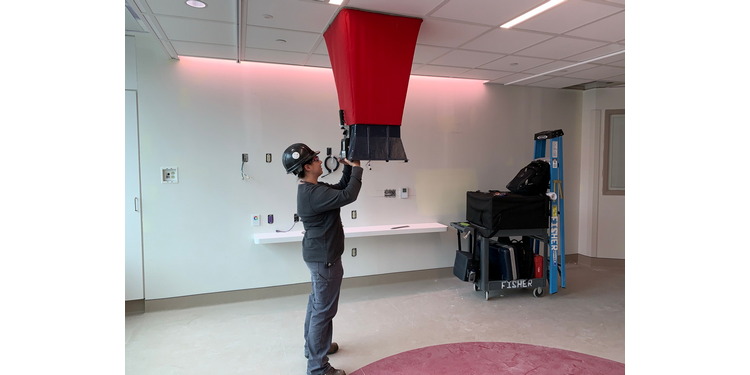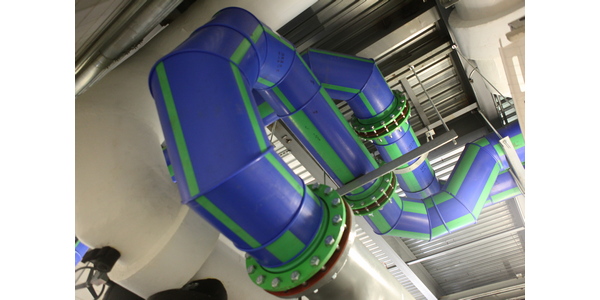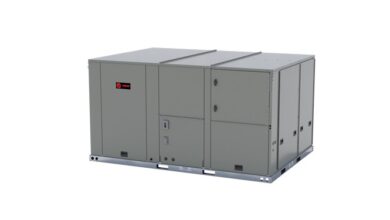
The COVID-19 pandemic put a spotlight on a lot of things. Health, supply shortages, manufacturing challenges, employee instability and much more. It also threw the importance of indoor air quality into the headlines, bringing it to the forefront for building managers.
As we learn to live with COVID-19, the importance of having a healthy building is a hot topic. With more people returning to work and school, their knowledge of indoor air quality and its impact on their health has heightened.
As HVAC professionals, we have a responsibility and an opportunity to share our understanding of what a healthy building is and the action steps needed to achieve it.
Understanding virus transmission
When an infected person coughs, sneezes or talks, aerosols carry the virus into the air from their nose or mouth, making any person in close proximity susceptible to transmission. Aerosols can remain in the air for a period of time if the space does not have an effective HVAC system.
Developing a healthy building plan
Both the Sheet Metal and Air Conditioning Contractors’ National Association and the Environmental Protection Agency provide excellent educational resources for building owners and HVAC professionals to ensure buildings are getting the best air quality.
The most critical first step is to work with a building manager to create an action plan. Each building is unique, so it is important to assess the entire building to establish all the indoor air quality needs. Key questions to consider include:
- Age of the system: When was the system installed? How old are the system’s parts? When was the last time a diagnostic test was run on the system?
- Lifecycle of the equipment: Equipment in buildings that are working harder (ex., hospitals, schools, etc.) must be checked more frequently as their equipment functions at a higher capacity than other structures.
- The complexity of the system: When the system was designed, what was it designed to do? The more parts or functions it has, the more complex it will be, and the more often it will need to be maintained.
Diagnosis, design and installation
Proper design and installation are becoming increasingly important as standards and technology become more advanced. The diagnosis and design both depend heavily on what needs to be mitigated.
It’s essential to evaluate the air in the building and what exactly will be required to ensure it is healthy. This may include new items such as UV lights, high-rated MERV filters, hydrogen peroxide scrubbers and ionization units, or smaller upgrades and improvements to systems, such as closing off any gaps around air filters to minimize air moving around them instead of through them.
Maintenance and monitoring
The system is built, and the calibration is complete, but how do building managers maintain it?
A yearly assessment is advised, with no more than two years between evaluations. The building maintenance crew typically does general maintenance, such as evaluating the system and changing filters and other tasks.
Funding indoor air quality projects
For projects lacking the funding to improve indoor air quality, it’s important to note The American Rescue Plan provides $350 billion in funds for state and local governments to draw upon specifically for efforts to improve indoor air quality. The plan also provides $122 billion for schools to utilize toward this effort. This funding can be accessed to:
- Inspect, test and maintain HVAC systems
- Upgrade old, outdated systems
- Purchase enhanced filters for HVAC systems
- Repair/replace doors and windows
- Provide education related to ventilation and COVID-19 in schools – How to assess, prioritize and plan for HVAC upgrades and IAQ improvements
- Make the case for preventive maintenance and proactive IAQ management
- Develop and implement the “IAQ tools for schools” program
The EPA and Centers for Disease Control and Prevention have made several resources available in guiding local and state governments.
Key takeaways
As industry professionals, we can help consumers understand the importance of good indoor air quality. From assisting the building maintenance crew to know the basics of general maintenance, to aiding governments and schools access necessary funding, HVAC professionals can reach far beyond building and maintaining systems. Through education, collaboration and communication, we can help building owners and operators ensure their building is in an environment with clean, healthy air.
Tony Kocurek is owner of Energy Balance & Integration, LLC and SMACNA’s president-elect.
Photos courtesy of SMACNA



